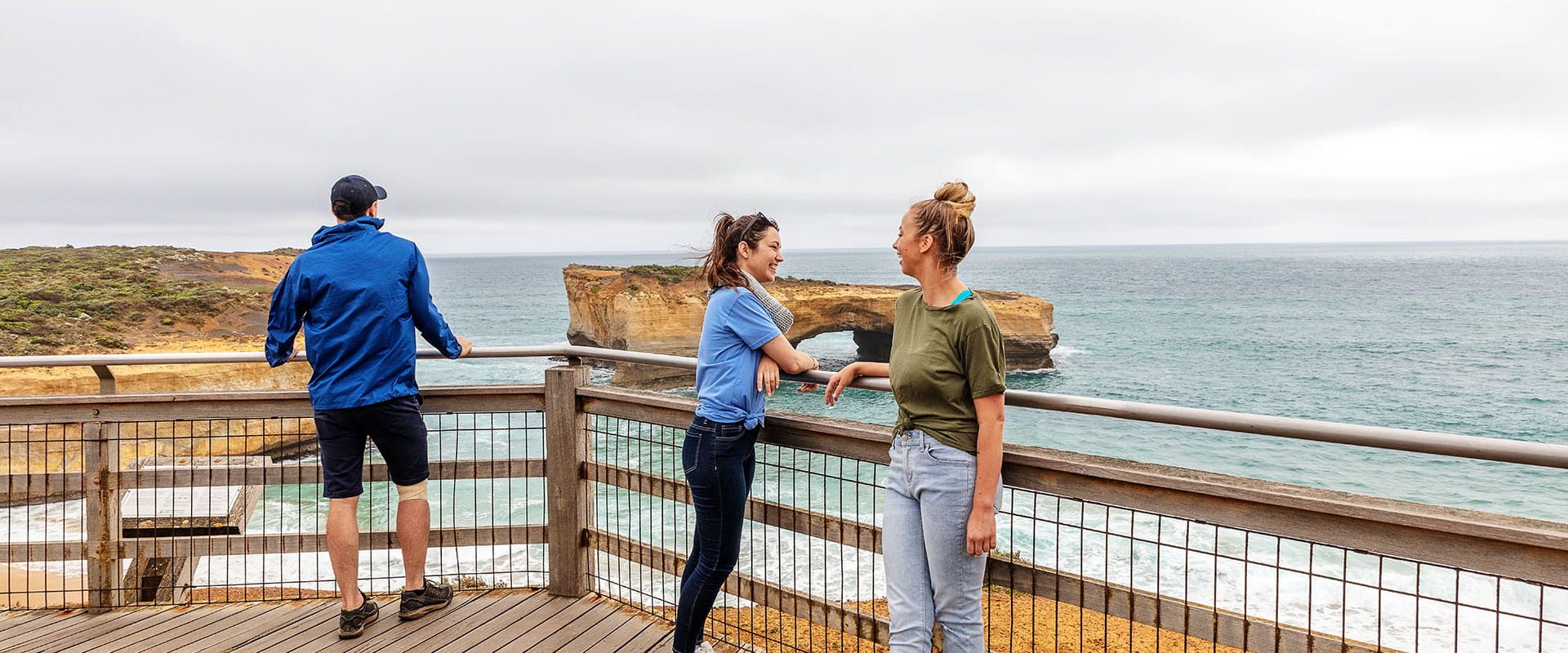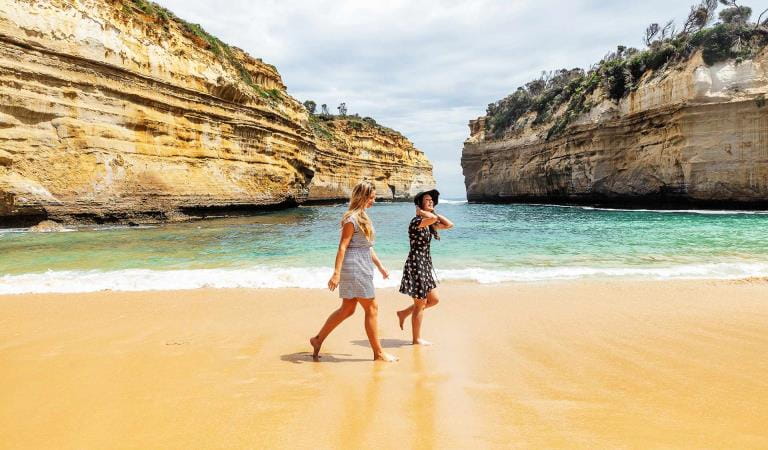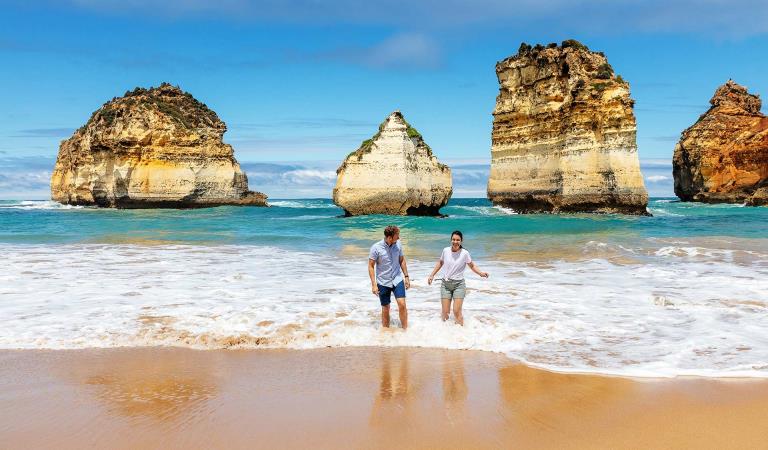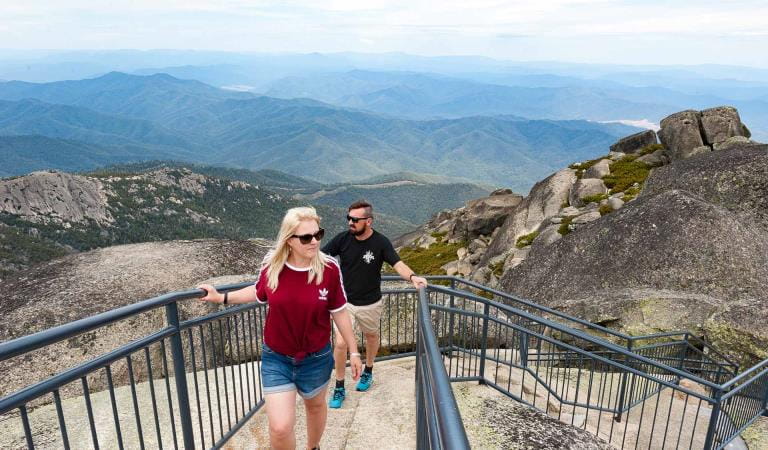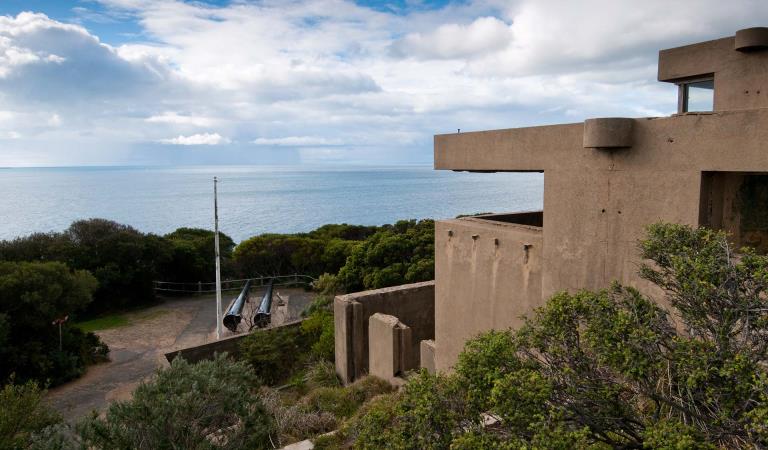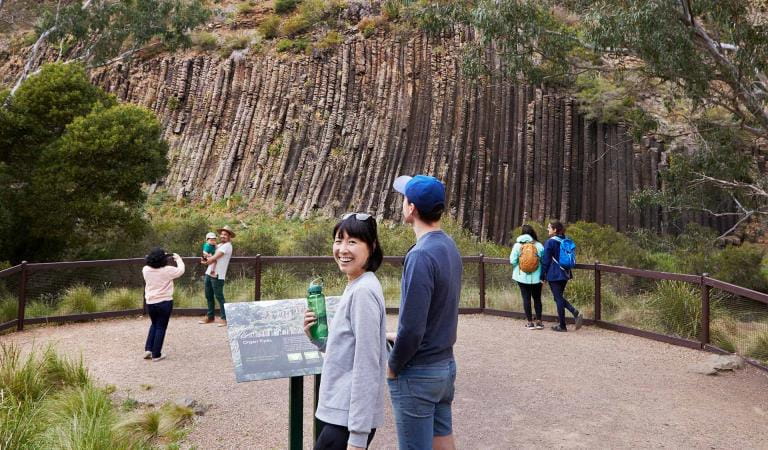Explore
London Bridge
The Great Ocean Road is famed for its stunning scenery - and no more so than on the stretch just past Port Campbell and the Twelve Apostles. Stop at these three highlights on your way to Warrnambool.
Originally a natural archway and tunnel, London Bridge collapsed on 15 January 1990 and became an isolated arch no longer connected to the mainland. Two tourists stranded on top of the remaining island had to be rescued by helicopter. Come to the lookout for the views or at dusk to spot the adorable Little Penguins coming ashore on the protected beach below. In winter keep an eye out for passing Southern Right Whales and Humpback Whales on their migration north.
Things to do in the area
The Arch
Shaped by ferocious Southern Ocean swells, the Arch sits precariously atop a rock platform. Step out on to one of two viewing platforms and enjoy panoramas out to the Twelve Apostles.
The Arch is a good example of the limestone formations in transition along the coast. Starting in the form of a tunnel, seeping rain and constant pounding wave action combine to dissolve and hollow it out until ultimately it stands free as an arch. Ultimately this arch and other rock stacks will collapse to form rock stacks. The nearby Twelve Apostles themselves have been shaped in this way.
The Grotto
This weathered hollow limestone formation is one of the most evocative and intimate of the coastal formations of the Great Ocean Road. Part-blowhole, part-archway, part-cave, its serene rock pools and smooth boulders frame the sea views and offer a sometimes peaceful place to soak in the wonders of sea-spray and nature. Enjoy stunning coastal panoramas from the upper platform before descending to The Grotto.
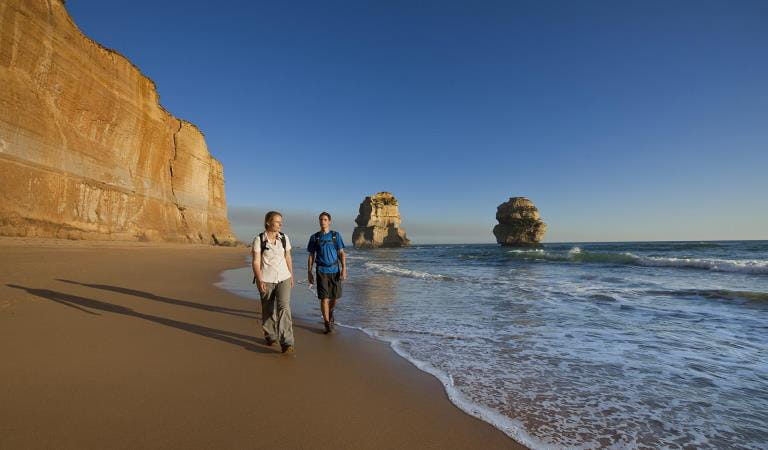
Gibson Steps
Loch Ard Gorge
Twelve Apostles

The Grotto
How to get there
London Bridge
When you're there
The weather and ocean conditions change constantly here and at times going down to explore The Grotto at eye-level can be dangerous, particularly if it’s windy and the tide is high.
Need to know
London Bridge
Accessibility
Visiting a park can be more of a challenge for people with disabilities, however in Victoria there are a wide range of facilities to help people of all abilities enjoy our wonderful parks around the state.
Assistance dogs are welcome in Parks Victoria parks and reserves. Entry requirements apply for parks and reserves that are usually dog prohibited, such as national parks.
Change of Conditions
Nature being nature, sometimes conditions can change at short notice. It’s a good idea to check this page ahead of your visit for any updates.
-
Loch Ard Gorge (Twelve Apostles Marine National Park, Port Campbell National Park)
Loch Ard Gorge Beach Access Steps Closed
Loch Ard Gorge beach access steps are currently closed due to geological instability. The site will remain closed until remediation works are completed to remove the hazards and ensure visitor safety.


